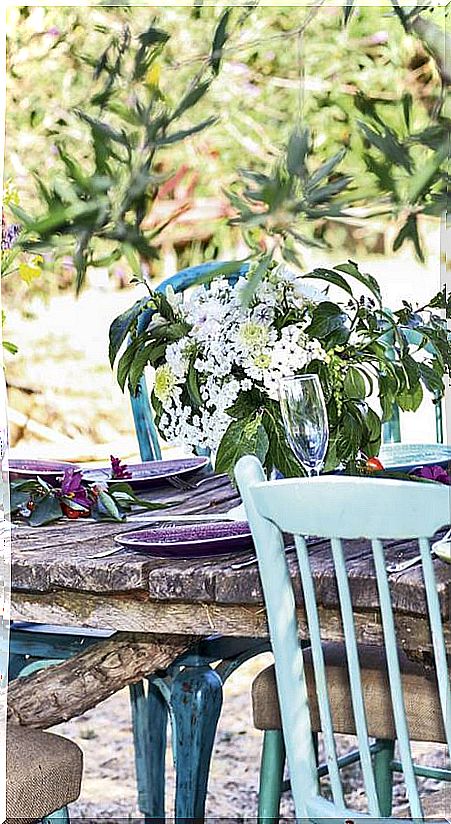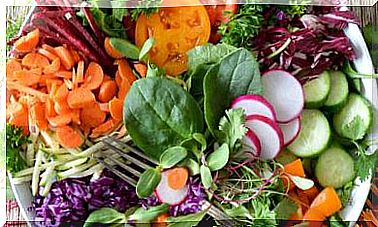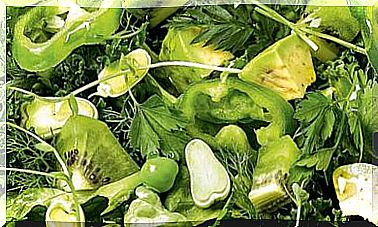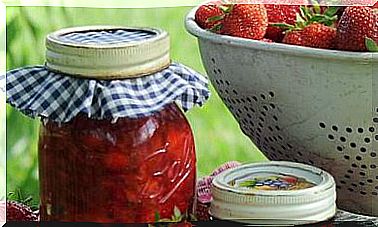Organic Florist: Local And Seasonal Bouquets
Some pioneering florists are committed to growing and composing bouquets with local and organic flowers. The result is stunningly beautiful.

Leticia Rodríguez de la Fuente wanted to open a flower shop “that would sell real flowers.” A modest place but with a lot of flowers, the kind he had seen in his courses with florists in England: “The bouquets there had another color palette, the tones of the buttercups and peonies were different, and it was because they used flowers of their own crops”.
Those flowers grew without heaters or chemicals, and they hadn’t been forced to a standard height. The sun and the wind gave them, there could not be two alike. “The market would have considered them defective,” says Leticia, “but for me they were full of nuances.”
Leticia understood that if she did not want to work with aseptic flowers, bathed in insecticides and arrivals from remote countries after a trip across the planet, she had to plant them herself. It was what the English women of the Flowers From the Farm movement or the Americans of Slow Flowers did.
Slow flowers, connected with the environment
He decided to train with Rachel Siegfried from Green and Gorgeous in the Oxfordshire countryside, and back home with his suitcase full of bulbs and seeds, he started planting. First in his mother’s garden, in Guadalajara, and soon in a 200 m 2 plot in the plain of the Jarama river: annual flowers, aromatic plants and English rose bushes.
He planned to open Flowrs Welcome Home, a florist that sold its own flower, with a new conception of flower arrangements that was more relaxed and connected with the environment. “That florists produce their own flowers implies a different way of understanding the compositions, a change of philosophy”, explains Leticia.
Flowrs opened in 2014 in the Antón Martín market in Madrid. In no time, his bouquets were made with a sensitive clientele who appreciated the flowers hardly handled. The public was a minority, clarifies Leticia, but “the Slow Flowers movement will come, without a doubt, it is something that transcends us.”
The proof of his conviction is that he has now redoubled the bet and bought a 3,000 m 2 plot of land in the valley of the Umbria river, in Guadalajara. Cosmos, delphinium, very delicate dahlias and bushes grow there, which he supplies for his arrangements.
“At last I have found what gives me fulfillment and happiness. The pleasure it gives me to buy the seed, sow it, water the plant, cut the flower and deliver it in a bouquet has no comparison with anything.”
Leticia is an advanced woman in our country, partially recovering the spirit of the old gardeners who brought their dahlias and gladioli to the markets. But other florists are beginning to join this trend in our country.
Flowers, not objects
Inés Urquijo’s flowers have been growing for a couple of years in a clearing surrounded by pine forests on the outskirts of Madrid. He named this 900 m 2 land , previously covered with rockrose, with the name of Pomona, the Roman goddess of fruit trees, gardens and orchards.
Inés has longed to grow her flowers since she started out in landscaping and floral decoration in 1990 . “I could not find the ones that I liked. I missed the movement, the unique expression of each flower. Because there is a lot of difference between a garden flower, freshly cut, and another that you buy from Colombia, rigid, soulless, as from plastic”.
“In order to commercialize them, they take away their essence from the flowers,” explains Inés, “that magical thing they have. Those grown to be enjoyed, not just to be sold, transmit something else, it is as if they had life, they spoke for themselves”.
Inés’s small garden only provides her with 10% of the flowers she needs for her orders, so she reserves her harvest for special requests : “If the bouquet is for someone sick, I send flowers from my garden. They are raised with so much love that I I think they are therapeutic. “
It makes you happy to bring flowers into the lives of others. She feels that her job is simply to share the emotion they arouse in her.
Will it expand the garden? Ines laughs. If he can defeat the pests, yes, of course, but today he saw a lobster in one of his old rose bushes and it made his heart skip a beat. I don’t want to put pesticides on them; I try to be as ecological as possible and I even use my own compost, but sometimes it is difficult… ».
Ecological and km0
Maren Termens, technical architect specialized in bio-construction, is together with her partner the architect of Horta de la Viola, a family garden of organic vegetables and flowers in Palafrugell (Girona). Anemones, pea flowers, dahlias or sunflowers are some of the more than one hundred varieties that grow there.
Maren is fascinated by projects by farmers-florists such as Erin Benzakein’s (Floret) near Seattle (United States), and many others in Great Britain: “A world opened up to us when after 15 years dedicated to in agroecology we discovered that with flowers it was also possible to take care of proximity, ecology and the bond between client and farmer “.
For just over a year he has been experimenting with flowers that he lets grow “as they want, without forcing them.” Sometimes the work in the garden is hard, but when he goes out to harvest the flowers first thing in the morning, he says that the moment is one of incomparable magic.
Its organic and naturalistic bouquets, in which garden flowers are mixed with other wild ones, are sold on request and in the Palafrugell and La Bisbal d’Empordà markets. In addition, they decorate events. There is still to be done and he is aware that this is not a country with a floral tradition: “Guests do not bring bouquets to dinners, they present themselves with a bottle of wine.”
But he is enthusiastic and believes that “the day will come when we will bring wine and flowers.”
She believes in the cooperation between florists-farmers from all over the world, very visible on social networks, and she herself participates in this exchange of knowledge.
Their flowers are also grown by Anna Álvarez from Floritismo, in Barcelona, Mar López de Gaztelur, near Biarritz or Marta Etxebarria from Lekandapean Flower Farm.
Although they do not have their own crops, Diana García, from Go Floral in Altafulla (Tarragona), or Àngels Artigas in her florist Flor a punt de Girona, bet on local and seasonal ones. Similarly, in Barcelona, Florster designs a different bouquet every day with fresh flowers from local producers (uses a system to avoid throwing them away) and sends them home by bicycle. To make the experience even more exciting, they send a video of the bike tour and delivery. They wrap their flowers, grown in the Maresme, in reused coffee bags donated by local roasters.
So while small growers cannot compete with the prices the Netherlands sets for flowers it imports from South America and Africa, there is a niche for non-mass-grown flowers. And with a little flower education we will become as sensitive to them as to the 0 km organic food.
Why prefer fresh local and seasonal flowers
These are some reasons to choose slow flowers.
- Fresh They have not been traveling for days nor have they been treated with chemicals to resist travel.
- Singular. The varieties are not the usual ones precisely because the market does not produce delicate flowers that do not travel well.
- Integrated. They are connected to the season of the year and where we live. Each flower expresses something unique linked to the present moment.
- They are imperfect. And it’s part of their charm: the stems don’t grow as stiff, their structure is more delicate, and they have unique shades.
- Cleaner. Its carbon footprint is much smaller. Their transportation is limited, at most, to a few kilometers and, as they are not forced to bloom out of season, they do not need heaters.
- Responsible consumption. They contribute to boosting the local economy and cheap labor has not been used for their cultivation in countries with lax regulations.









